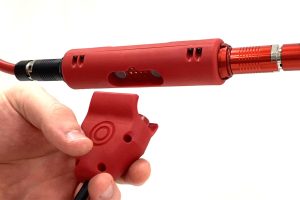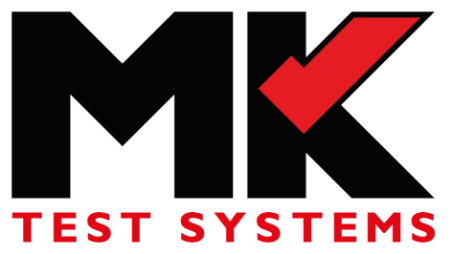Poka-yoke: Reducing human error in wire harness testing

For wire harness manufacturers, quality control is vital to ensure that their products are delivered with zero defects. Failures incur costs and delays, cause frustration, and damage reputations. In applications like rail or aerospace, they could even create a risk to human safety. In such a highly manual industry, human error is inevitable – but it can be minimised. This article discusses how the concept of Poka-yoke (“mistake-proofing”) designs out as many errors as possible from the manufacturing process.
Preventing mistakes from becoming defects
Mistakes are an inevitable part of any production process, whether they arise from human errors in design or from production. A successful quality strategy therefore involves recognising this reality and allowing for it within business processes.
Ensuring mistakes are discovered as early as possible in the manufacturing process means they can be rectified before they can reach the customer as defects.
Achieving optimum quality through Poka-yoke

Poka-yoke (pronounced as poh-kah yoh-keh) is a Japanese word that translates as ‘mistake-proofing’ and is an effective technique in improving production quality.
It was invented in the 1960s by industrial engineer Shigeo Shingo and applied to the Toyota production system to eliminate errors. Poka-yoke is a quality control process used within lean manufacturing to ensure that products are in perfect condition. It ensures that products are manufactured right the first time, reducing the cost of trial and error.
The core principle of Poka-yoke is designing the production process to make it impossible for human error to occur. If this is not possible then steps should be introduced that detect and correct errors at the source before they have a chance to move down the production line.
Poka-yoke in wire harness testing
For wire harness manufacturing and installation, some common manufacturing errors can be caught and corrected in the testing process. However, the testing process itself can introduce extra errors and reduce the efficiency of production.
One of the most common human errors in automated wire harness testing is miss-connection of the test equipment or ‘hook-up errors’. These errors are very easy to create and not easy to detect with traditional Automated Test Equipment (ATE) because they appear as failures in the wire harness under test and not in the ATE connection itself.
Modern ATE solve the ‘hook-up error’ problem by introducing Poka-yoke concepts that make it impossible or reduce the likelihood of these errors. They also allow users to follow the ‘motion/step’ category of poka-yoke. This method ensures that there are checks at every step of the process to identify errors in advance. Mistakes are made obvious at an early stage of testing to ensure that the entire harness is checked, irrespective of its complexity. Faults are captured early, every time, so no defective harnesses are shipped to OEMs or built into air or rail vehicles.
To implement Poke-Yoke concepts in production using ATE, no harness is allowed to move on from the tester until it checks out as defect-free. Unlike other quality strategies such as statistical process control or 100 percent inspection, mistake proofing can be performed with immediate pass/fail feedback.
RTS – providing poka-yoke quality control in wire harness testing

MK Test Systems’ RTS harness test system provides a good basis for poka‑yoke quality control. It allows harness manufa
cturers to instantly check harness wiring integrity during manufacture, instead of afterwards. Its diagnostic ability and highly visual format provides instant results, enabling faults such as open circuits or miswiring to be detected and fixed immediately.
The RTS system’s compact design suits integration into cable harness manufacturing facilities as well as use in installation environments. It fits into the smallest onboard spaces, without needing long interface cables away from the formboard or test bench. Adaptors are typically 20cm, compared to traditional interface cables of 5m to 10m. Switching modules are small, lightweight and connect directly to each harness connector.
The MAG connector is a key component of the RTS system. Good poka-yoke practice shown here includes the magnetic polarity providing user guidance for correct orientation, and colour-coded connectors at each end for correct hook-up. These design features result in rapid deployment and hook-up, while significantly reducing cable costs. The system also provides build progress feedback to further improve productivity for harness shops.
The RTS system’s Poka-yoke approach includes making assembly mistakes obvious. Harness faults and location are indicated clearly and instantly due to the visual LEDs. All RTS switching modules are fitted with a full colour RGB indicator per connector. This indicator adds to the real-time feedback for operators showing the state of each connection (Pass/Fail/Idle etc.). Using this, you can quickly identify fault locations and fix them immediately. Detailed, real time reporting means you don’t have to wait for a full test to complete.
The test itself is also rapid. It completes by the time you finish connecting the test system, thanks to its high-speed switching using solid state switches. Measurements are made continuously; RTS repeatedly scans the Unit Under Test (UUT) and presents real time data to MK Systems’ MKAT Gen3 software. This gives users access to the full range of powerful and intuitive MKAT test, diagnostics and reporting tools.
Bringing simplicity, speed, and convenience to harness testing
Overall, the RTS System’s unique combination of high-speed technologies reduces operators’ time and testing by more than 30%. Additionally, its miniature footprint means easier storage, reduced handling effort and rapid deployment. Ultimately, the system provides far less interruption to other work-packages during the test phase than traditional e-test systems.
The RTS system allows wire harness shops and rail or aerospace OEMs to optimise quality using Poka-yoke methodology. At low cost per test, 100% testing is possible so it gives clear, immediate, visual indication of any faults. This ensures that users fix them early in the manufacturing process, without allowing defective harnesses through to shipping or installation.
